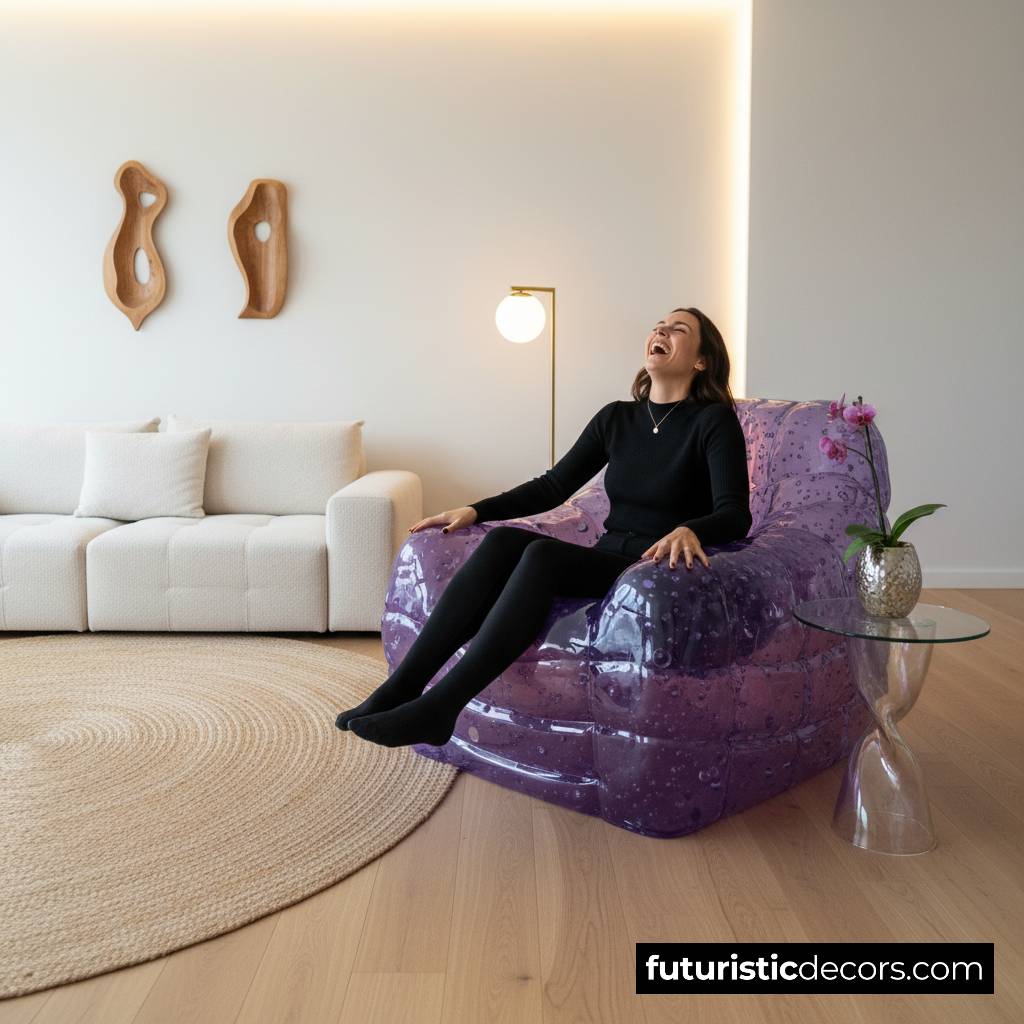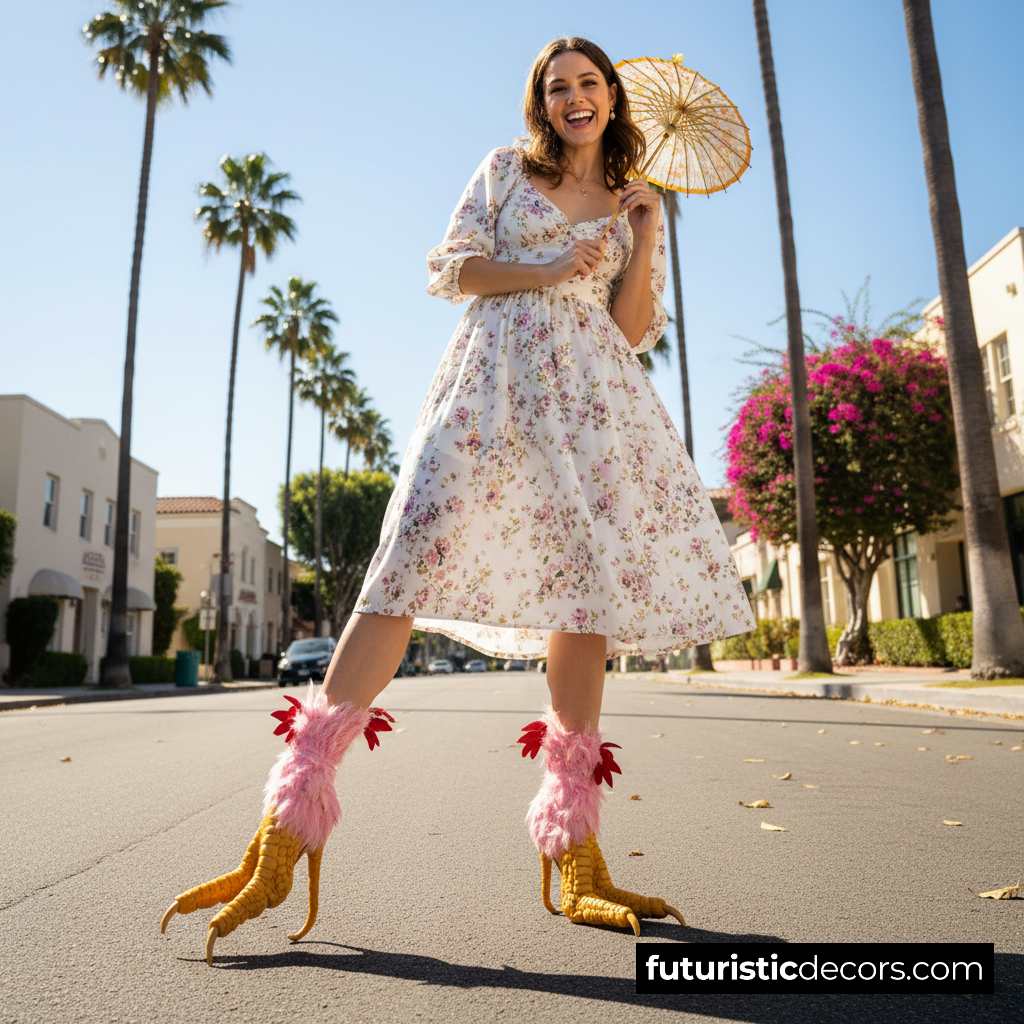In the ever-evolving world of interior design, finding pieces that not only serve a functional purpose but also inject personality and charm into a space can be a delightful challenge. Enter House Shaped Loungers—a whimsical yet comfortable addition to modern furniture collections that seamlessly blend artistry with relaxation. These unique loungers are more than just seating; they are statement pieces that transform any room into a haven of style and comfort. This article delves deep into the enchanting world of House Shaped Loungers, exploring their origins, design elements, benefits, and the ways they can elevate contemporary living spaces.
The Origins of House Shaped Loungers
To appreciate the allure of House Shaped Loungers, it’s essential to understand their origins. The concept of incorporating architectural elements into furniture isn’t entirely new. Designers have long been inspired by the structures and forms of buildings, translating them into functional art pieces. However, House Shaped Loungers take this inspiration a step further by embodying the very essence of a home within a piece of furniture.
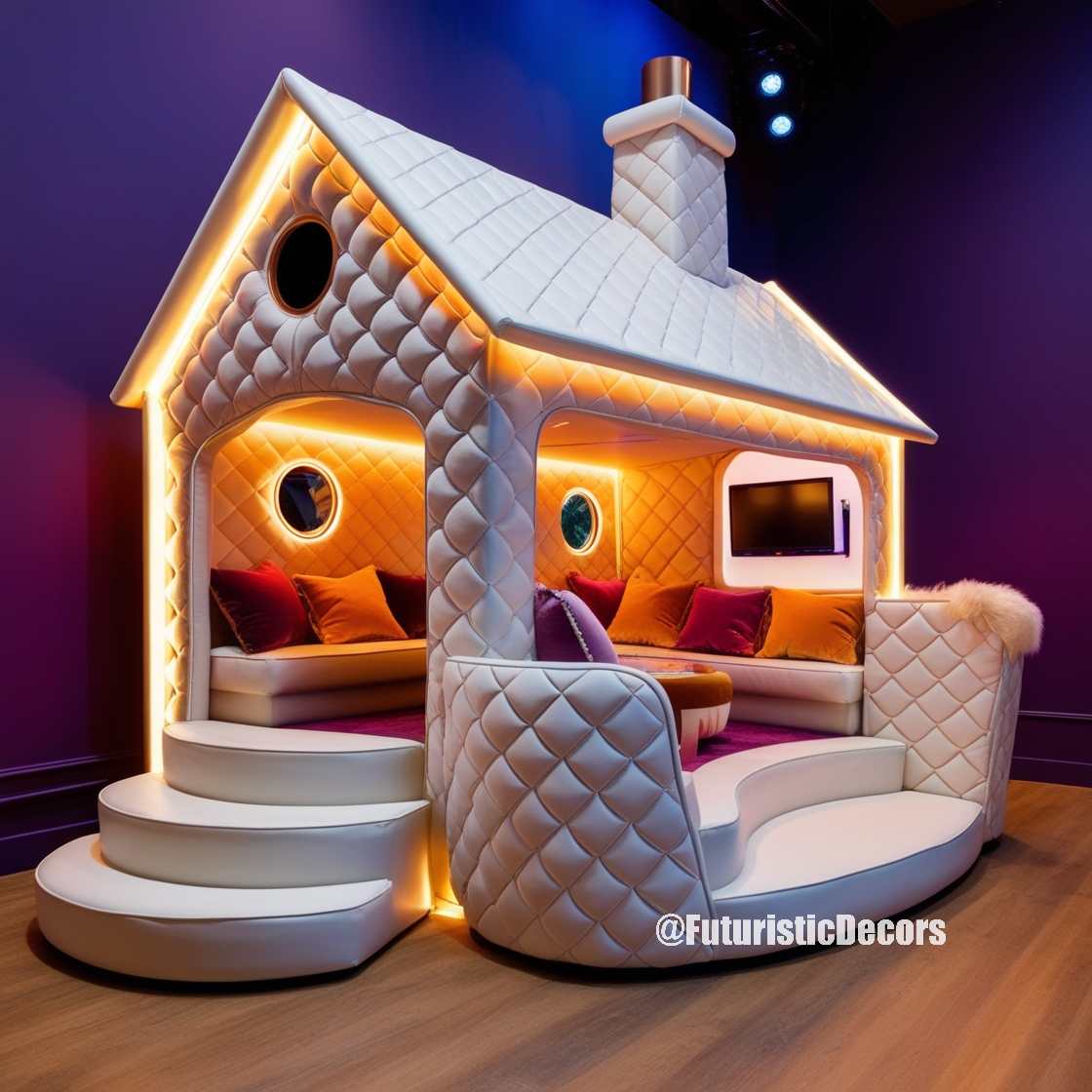
The idea likely emerged from the mid-20th century modernist movement, where functionality and form were harmoniously balanced. Designers sought to create pieces that were not only practical but also aesthetically pleasing, often drawing inspiration from everyday objects and environments. House Shaped Loungers epitomize this philosophy, merging the comfort of a lounger with the familiar and inviting shape of a house, thereby creating a sense of homeliness and whimsy.
Design Elements of House Shaped Loungers
Architectural Inspiration
At the heart of House Shaped Loungers is the architectural design of a house. These loungers often feature elements such as pitched roofs, windows, doors, and sometimes even chimneys, all meticulously crafted to resemble a miniature home. The use of such elements not only enhances the visual appeal but also evokes a sense of nostalgia and comfort.
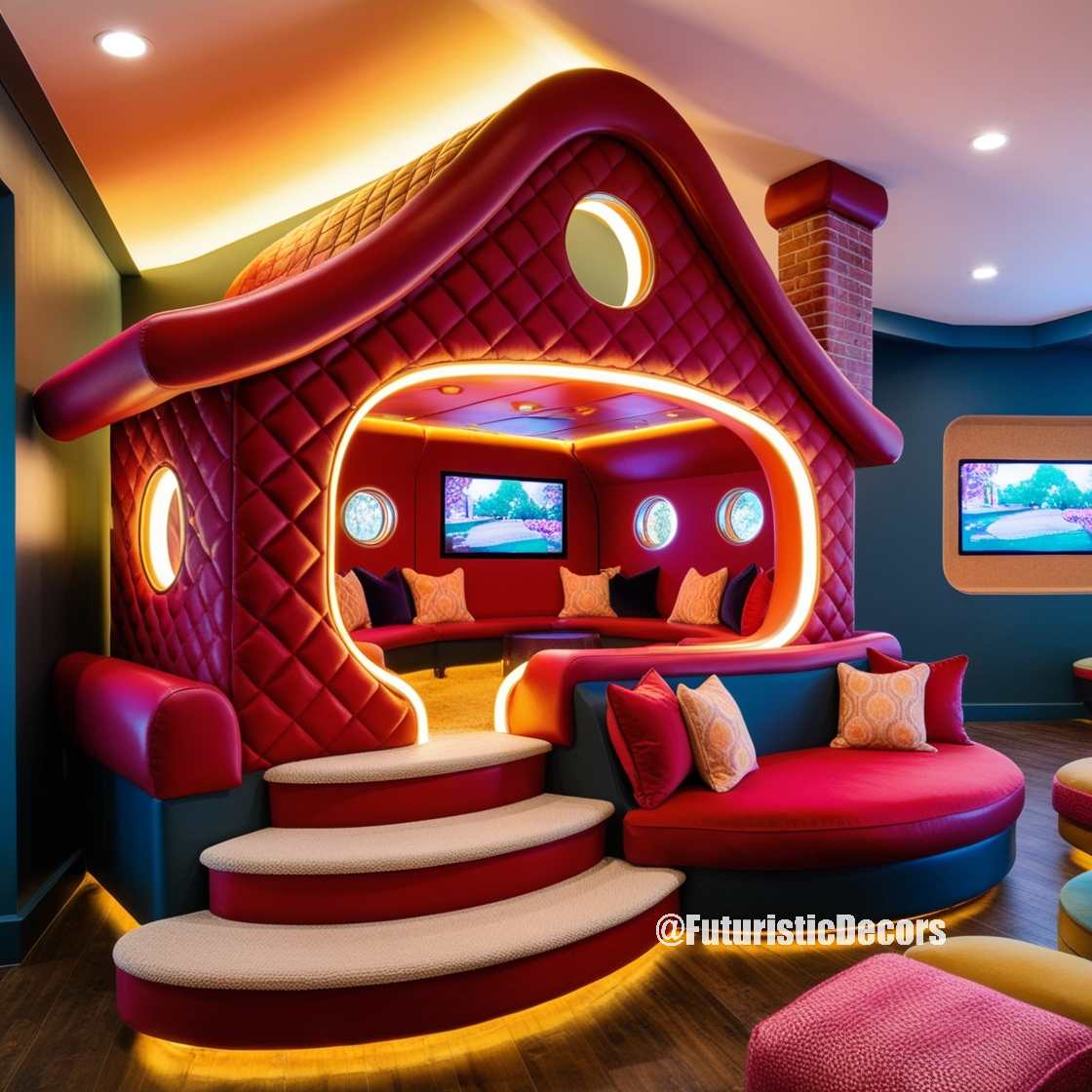
Materials and Craftsmanship
The materials used in crafting House Shaped Loungers are carefully selected to balance durability with aesthetic charm. Common materials include high-quality woods, molded plastics, and upholstered fabrics that mimic the textures and colors of traditional homes. Upholstery plays a crucial role, with fabrics often chosen to reflect the cozy interiors of a house—think soft linens, plush velvets, or patterned textiles that add depth and character.
Craftsmanship is paramount in creating these loungers. Attention to detail ensures that each architectural feature is accurately represented while maintaining the functionality of the lounger. Skilled artisans meticulously shape and assemble each component, ensuring that the final product is both a work of art and a comfortable seating option.
Color Schemes and Finishes
Color plays a significant role in the overall aesthetic of House Shaped Loungers. Designers often employ a palette that complements modern interiors while highlighting the whimsical nature of the loungers. Soft pastels, bold primary colors, and neutral tones are commonly used, allowing these pieces to either stand out as focal points or blend seamlessly into the existing décor.
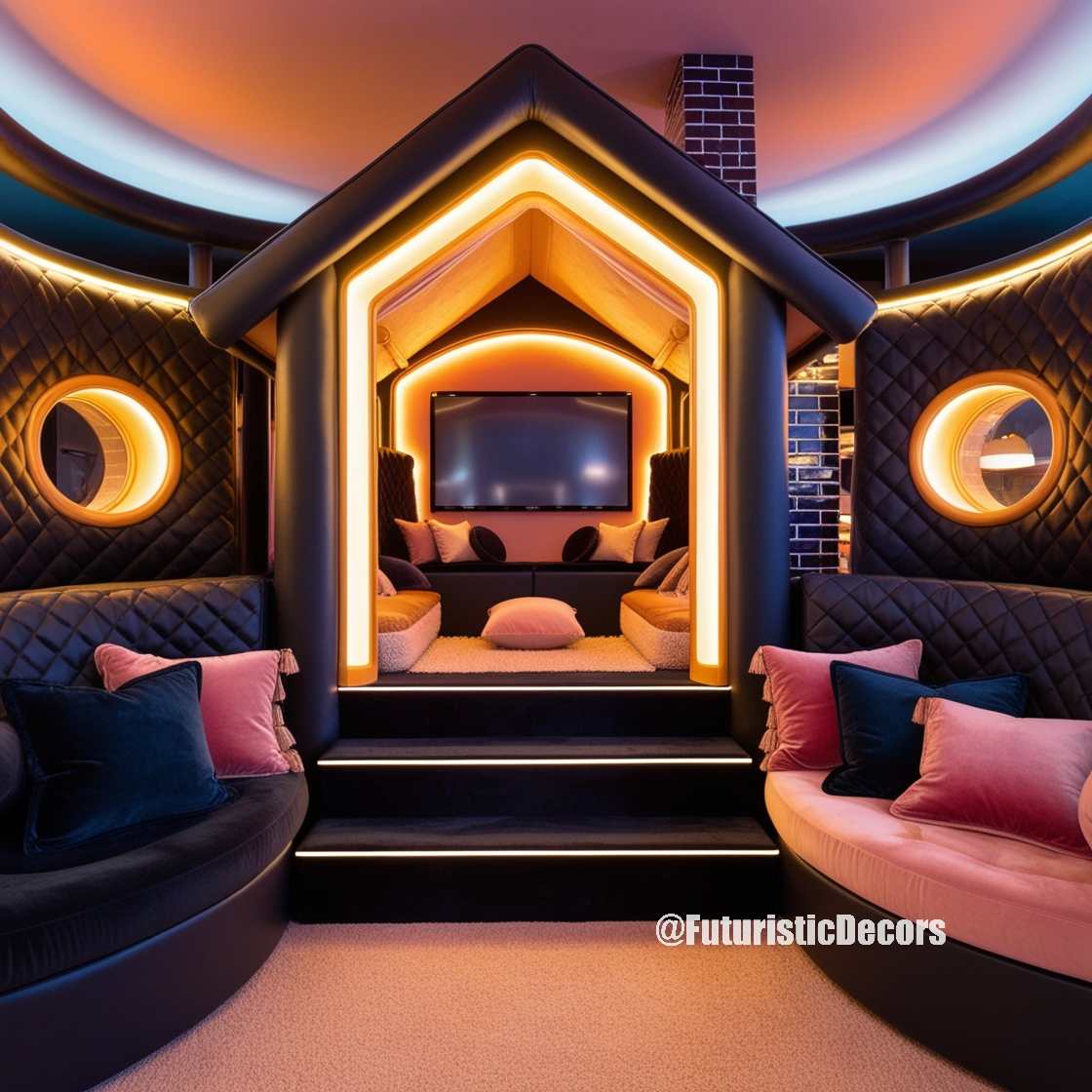
Finishes vary based on the materials used. Wooden loungers may feature stained or painted finishes that accentuate the grain or color, while upholstered pieces might showcase intricate patterns or solid colors that enhance their visual appeal. The choice of finish contributes to the lounger’s ability to harmonize with different interior styles, from minimalist to eclectic.
Functionality and Comfort
Despite their unique appearance, House Shaped Loungers do not compromise on comfort. Ergonomic design principles are employed to ensure that these loungers provide adequate support and relaxation. Features such as contoured seating, plush cushions, and adjustable elements cater to the diverse needs of users.

Additionally, some designs incorporate multifunctional aspects, such as storage compartments within the “house” structure or reclining capabilities. These thoughtful touches enhance the practicality of the loungers, making them suitable for various settings, whether it’s a living room, bedroom, or outdoor patio.
The Whimsical Appeal of House Shaped Loungers
Evoking Playfulness and Creativity
One of the most compelling aspects of House Shaped Loungers is their ability to infuse a sense of playfulness and creativity into a space. The whimsical design breaks away from conventional furniture norms, offering a touch of fantasy and imagination. This playful element can lighten the mood of a room, making it feel more inviting and less formal.
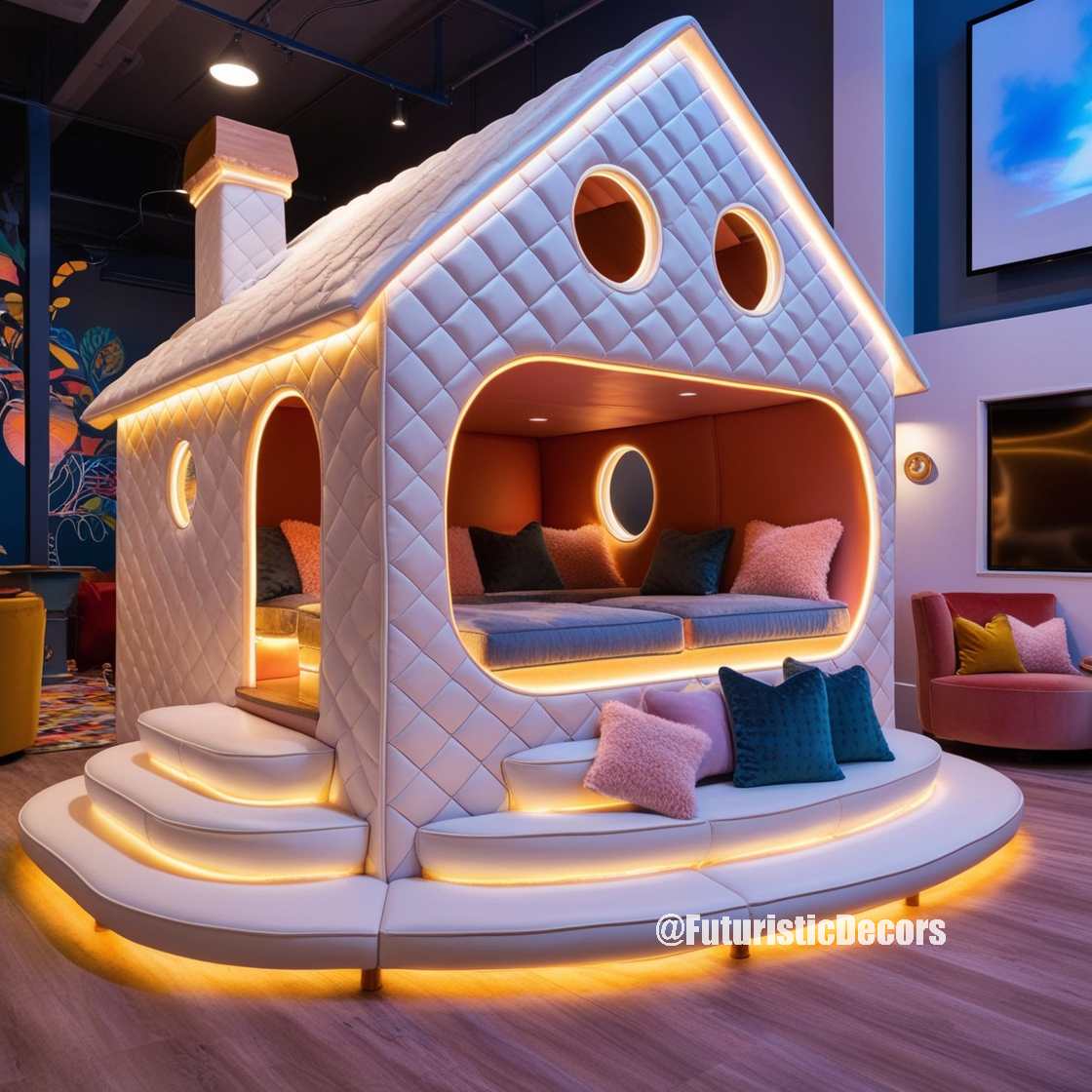
Creating a Focal Point
House Shaped Loungers naturally draw attention due to their distinctive shape and design. As a result, they often become the focal point of a room, around which other décor elements are arranged. This centrality allows them to anchor a space, providing a cohesive theme that ties together various design aspects.
Enhancing Emotional Well-being
The familiar shape of a house resonates with many, symbolizing safety, comfort, and belonging. Incorporating such symbols into furniture design can have a positive impact on emotional well-being. House Shaped Loungers can evoke feelings of warmth and relaxation, creating a comforting environment that promotes rest and rejuvenation.

Integrating House Shaped Loungers into Modern Interiors
Living Rooms
In living rooms, House Shaped Loungers can serve as both functional seating and artistic statements. Placed near a window or as part of a conversation area, they invite relaxation and social interaction. Pairing them with complementary furniture pieces, such as minimalist coffee tables or eclectic side tables, can create a balanced and harmonious space.
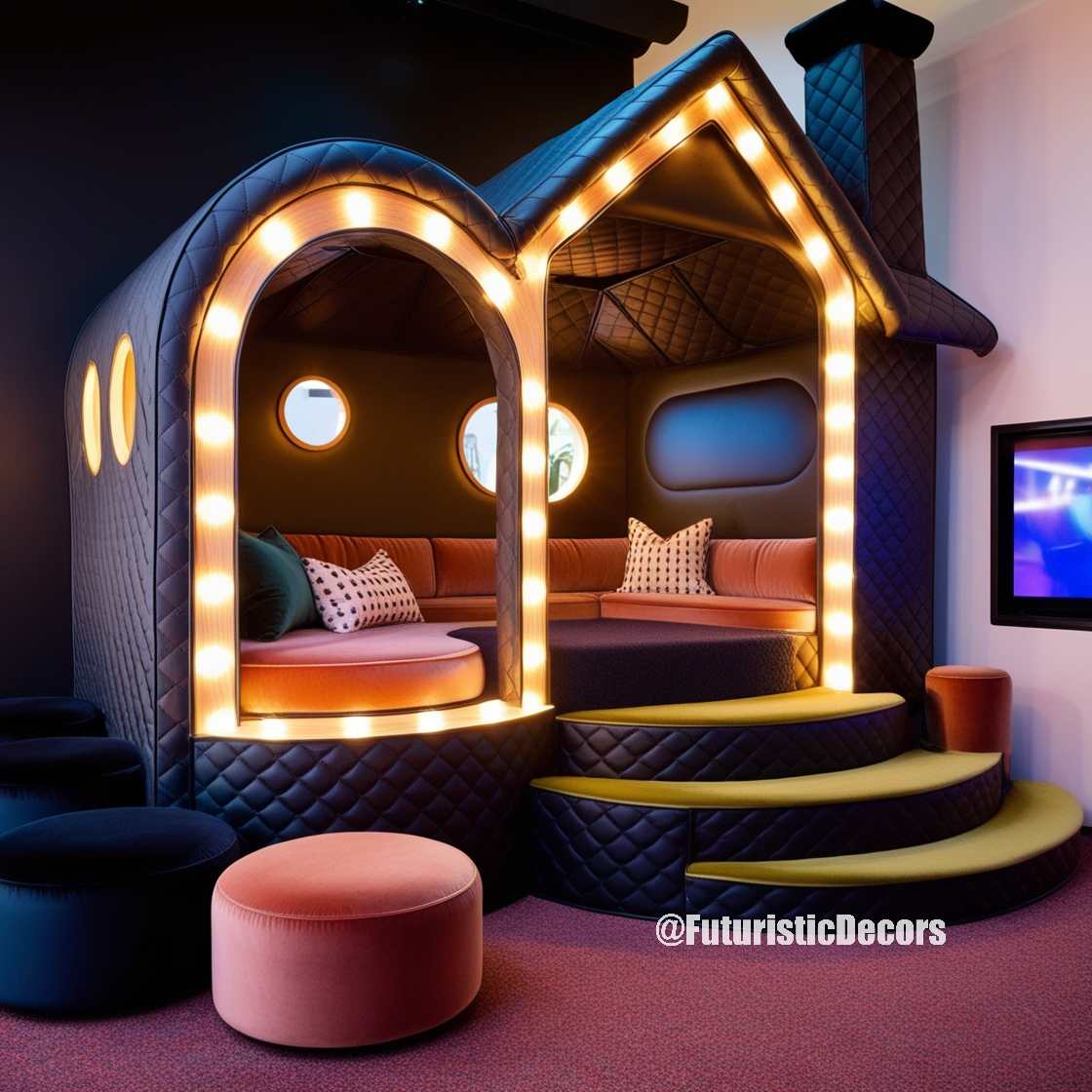
Bedrooms
A House Shaped Lounger in the bedroom can act as a cozy reading nook or a decorative accent. Positioned near the bed or in a corner, it provides a comfortable spot for unwinding. Choosing upholstery that complements the bedroom’s color scheme enhances the overall aesthetic, ensuring that the lounger blends seamlessly with the rest of the décor.
Outdoor Spaces
Outdoor areas, such as patios and gardens, are perfect settings for House Shaped Loungers. Weather-resistant materials and fabrics make these loungers suitable for various climates, allowing homeowners to enjoy whimsical comfort in their outdoor retreats. Combining them with greenery, outdoor rugs, and ambient lighting can create a charming and inviting outdoor living space.
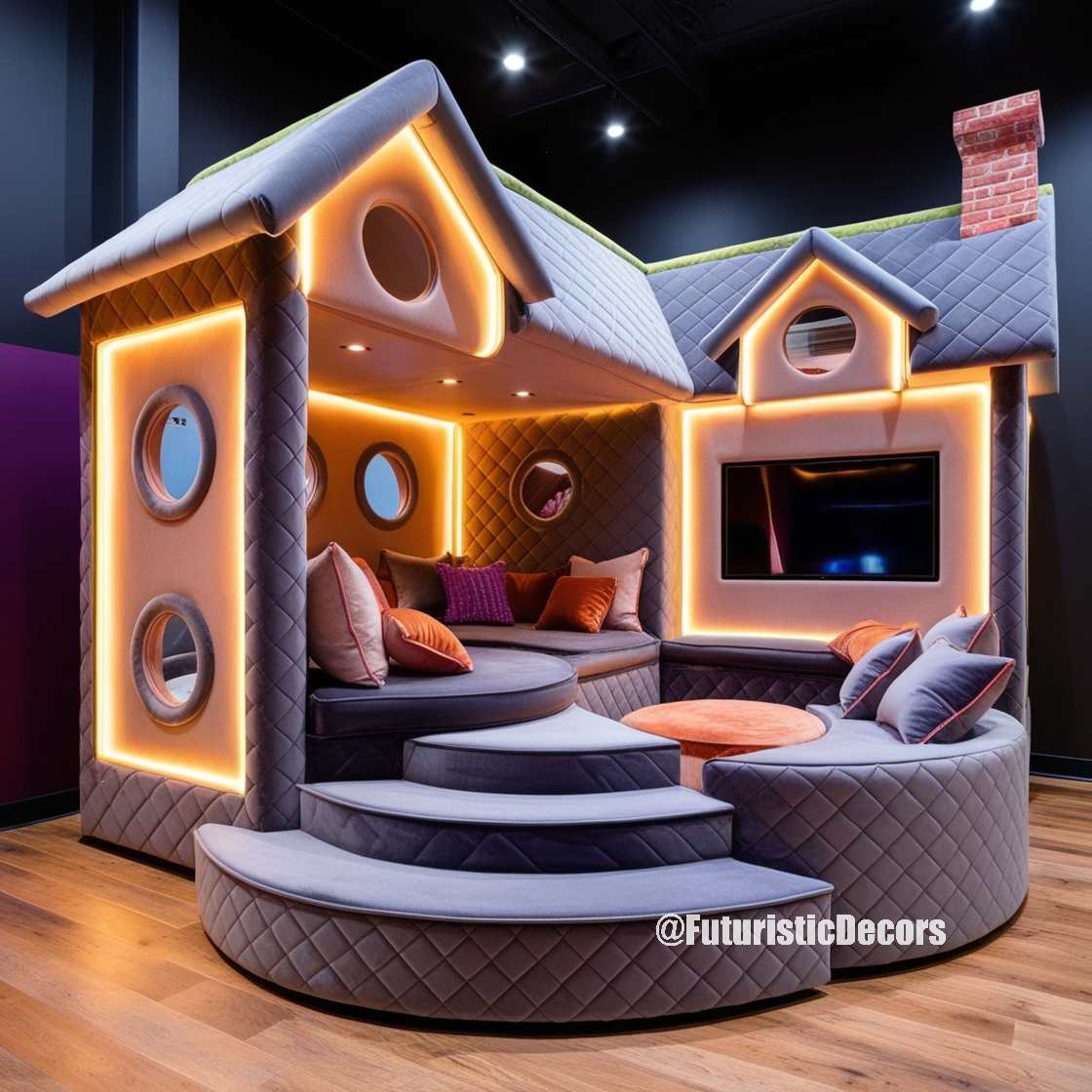
Children’s Rooms
In children’s bedrooms or playrooms, House Shaped Loungers can add a touch of magic and imagination. Their playful design encourages creativity and can become a favorite spot for storytelling or relaxation. Opting for vibrant colors and durable materials ensures that these loungers are both fun and functional for young users.
Offices and Studios
Even in more formal settings like home offices or creative studios, House Shaped Loungers can introduce a unique element that sparks inspiration. They provide a comfortable alternative to traditional office chairs, fostering a more relaxed and creative atmosphere. Integrating them into workspaces can enhance productivity and add a distinctive flair to the environment.
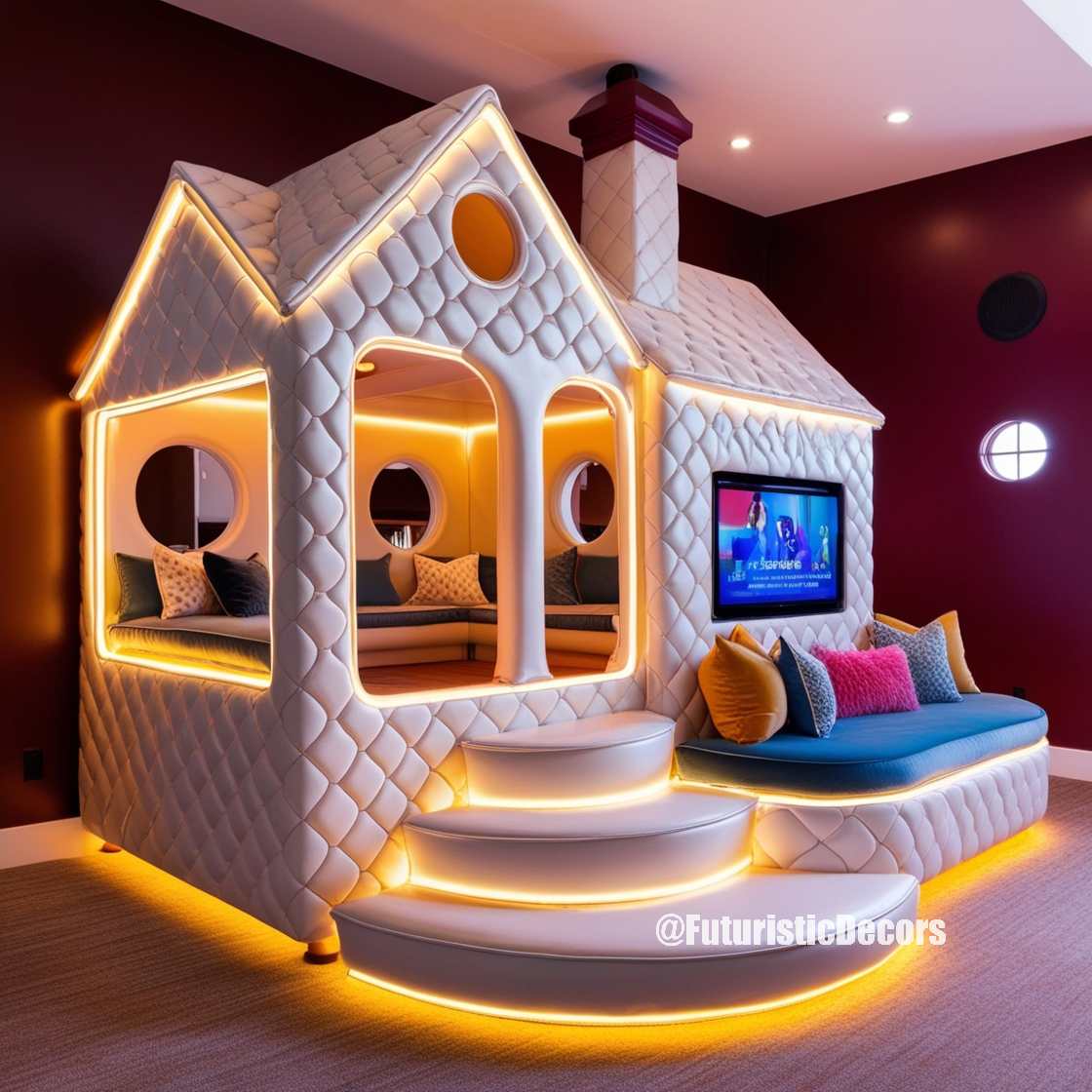
Customization and Personalization
Tailored Designs
One of the significant advantages of House Shaped Loungers is the potential for customization. Homeowners and designers can work with manufacturers to tailor the design, size, color, and materials to fit specific preferences and space requirements. This level of personalization ensures that each lounger is a unique reflection of the individual’s style and needs.
Incorporating Personal Elements
Personal touches can further enhance the charm of House Shaped Loungers. Incorporating elements such as family crests, favorite colors, or unique patterns can make these loungers even more special. These personalizations transform the lounger into a meaningful piece that holds sentimental value, in addition to its functional role.
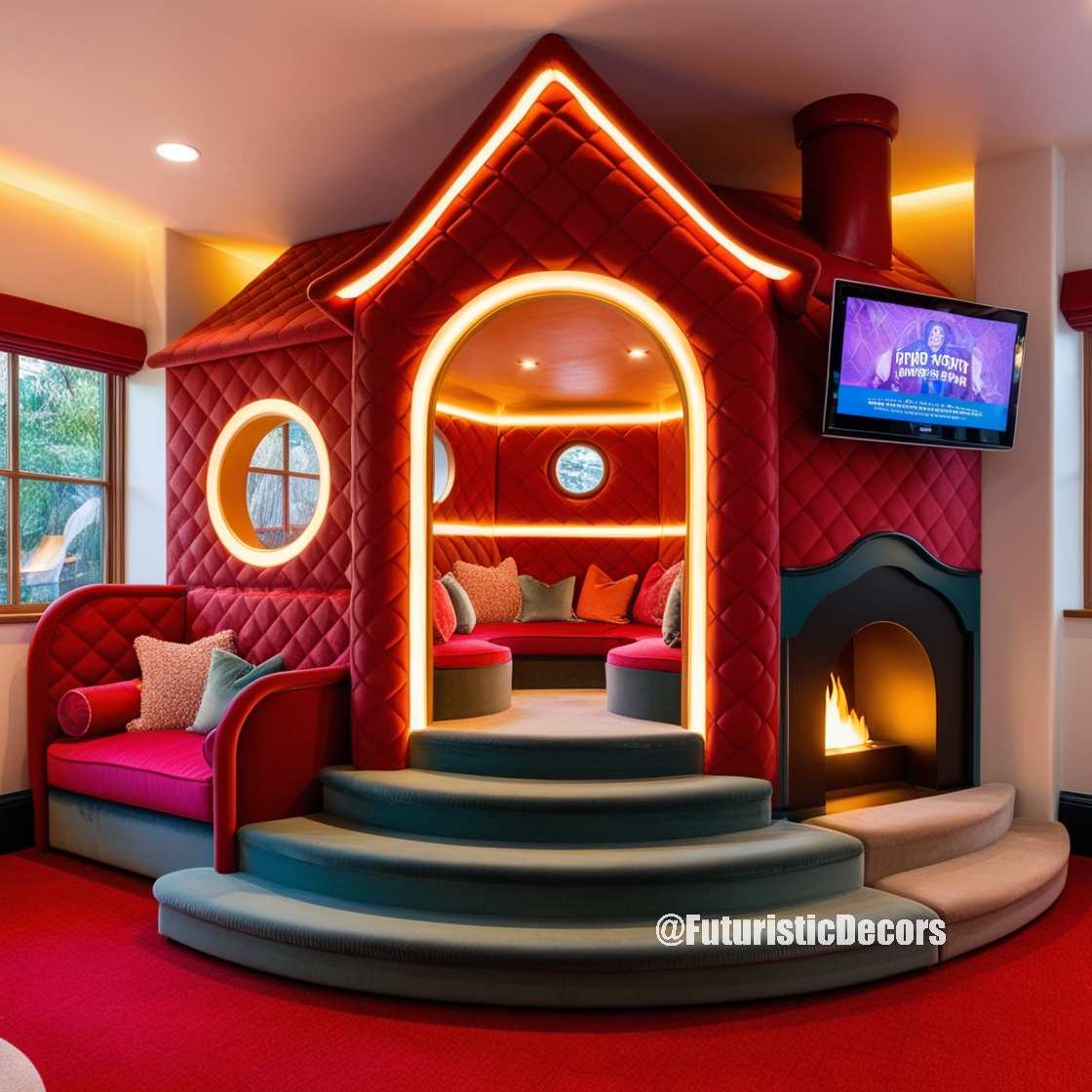
Modular Options
Some designers offer modular House Shaped Loungers that allow for reconfiguration and adaptability. These options provide flexibility in how the lounger is used and arranged within a space. Modular designs cater to changing needs and preferences, ensuring that the lounger remains a relevant and cherished piece over time.
Sustainability and House Shaped Loungers
Eco-Friendly Materials
In an era where sustainability is paramount, many House Shaped Loungers are crafted using eco-friendly materials. Sustainable woods, recycled plastics, and organic fabrics are commonly utilized to reduce environmental impact. Choosing loungers made from such materials aligns with eco-conscious values and promotes responsible consumption.
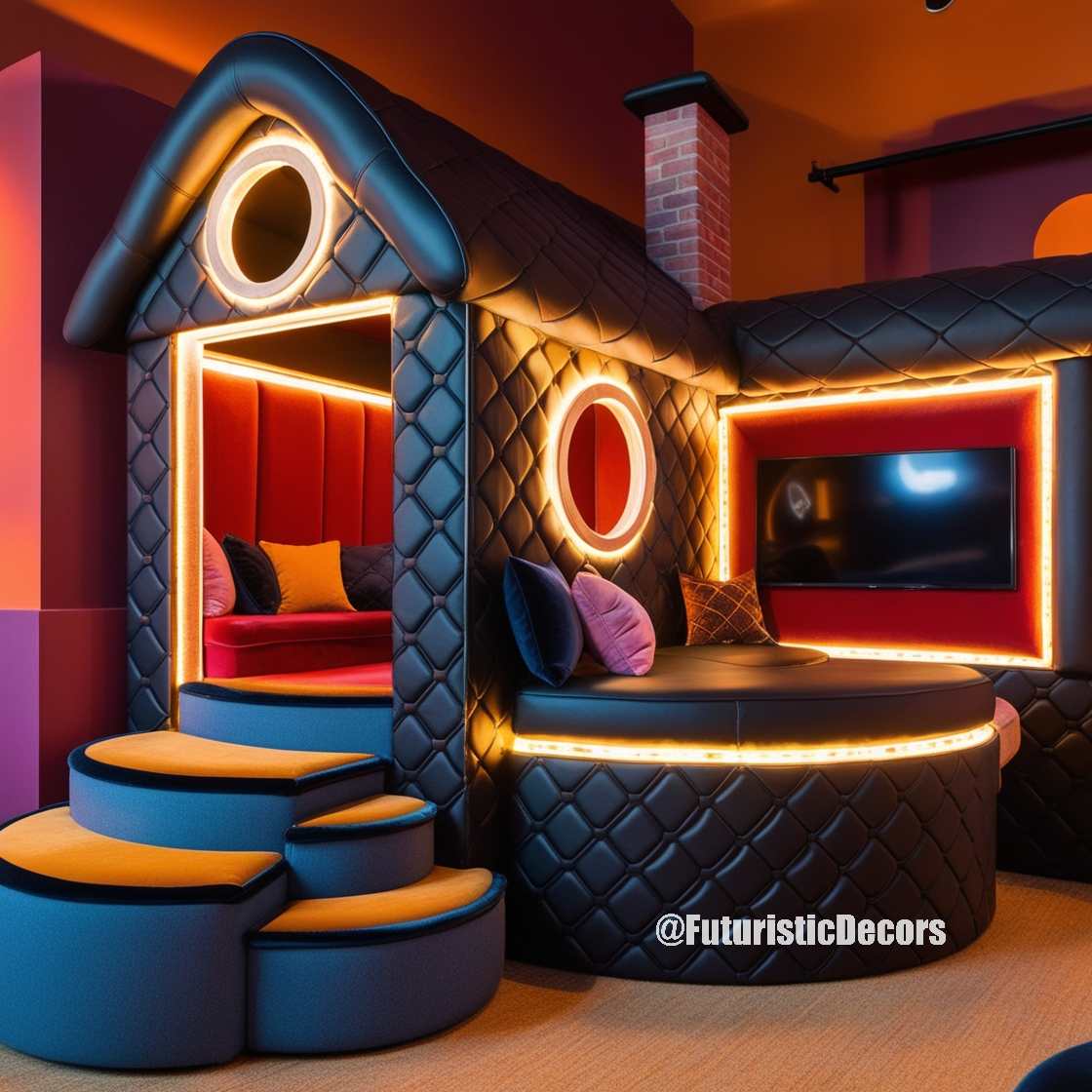
Durability and Longevity
The durability of House Shaped Loungers contributes to their sustainability. High-quality craftsmanship and materials ensure that these loungers withstand the test of time, reducing the need for frequent replacements. Investing in durable furniture pieces not only benefits the environment but also offers long-term value to homeowners.
Ethical Manufacturing Practices
Ethical manufacturing practices are increasingly important in the furniture industry. Many designers of House Shaped Loungers prioritize fair labor practices, ensuring that their products are made under safe and equitable conditions. Supporting brands that uphold these values fosters a more responsible and humane industry.
The Market for House Shaped Loungers
Target Audience
House Shaped Loungers appeal to a diverse audience, including homeowners seeking unique statement pieces, interior designers looking to add distinctive elements to their projects, and individuals passionate about whimsical and artistic furniture. Their versatility allows them to fit into various settings, from modern minimalist homes to eclectic and bohemian interiors.
Price Range
The price of House Shaped Loungers varies based on factors such as design complexity, materials used, and level of customization. While some loungers are affordable and accessible, bespoke pieces can command higher prices due to the craftsmanship and personalized elements involved. This range ensures that there is an option available for different budgets and preferences.
Availability
These loungers can be found through specialized furniture boutiques, online marketplaces, and custom furniture makers. Additionally, designers and brands that focus on unique and artistic furniture pieces often feature House Shaped Loungers in their collections. Limited editions and exclusive designs further enhance their appeal and desirability.
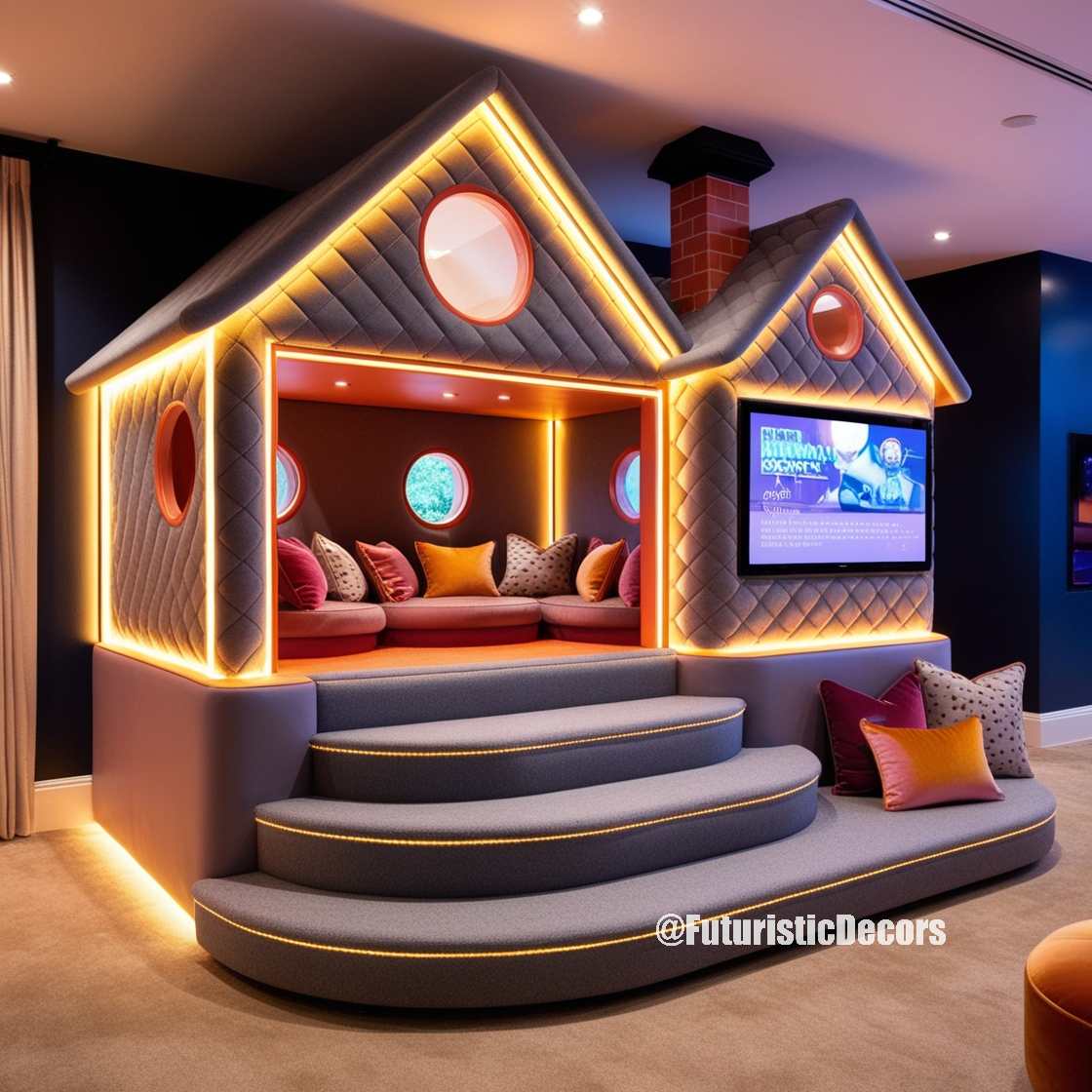
Caring for Your House Shaped Loungers
Maintenance Tips
Proper maintenance ensures that House Shaped Loungers remain in pristine condition for years to come. For upholstered loungers, regular vacuuming and prompt attention to spills can prevent stains and wear. Wooden components should be dusted regularly and treated with appropriate finishes to preserve their appearance.
Cleaning Guidelines
Adhering to manufacturer-specific cleaning guidelines is essential. Depending on the materials used, different cleaning methods may be required. For instance, fabric upholstery might benefit from steam cleaning or gentle washing, while wooden parts may require specific wood cleaners or polish.
Repair and Restoration
In the event of damage, seeking professional repair services is advisable to maintain the integrity of the lounger. Restoration efforts can include reupholstering, refinishing wood surfaces, or fixing structural components. Regular inspections can help identify and address issues early, prolonging the lifespan of the lounger.
House Shaped Loungers in Pop Culture and Media
Representation in Design Shows
House Shaped Loungers have made appearances in various design and home décor shows, often highlighted for their unique and eye-catching designs. These features introduce the loungers to a broader audience, inspiring homeowners to incorporate similar pieces into their spaces.
Influence in Art and Literature
The whimsical nature of House Shaped Loungers resonates with themes in art and literature that explore the intersection of functionality and fantasy. They symbolize the blending of everyday life with imaginative elements, reflecting broader cultural trends that value creativity and self-expression.
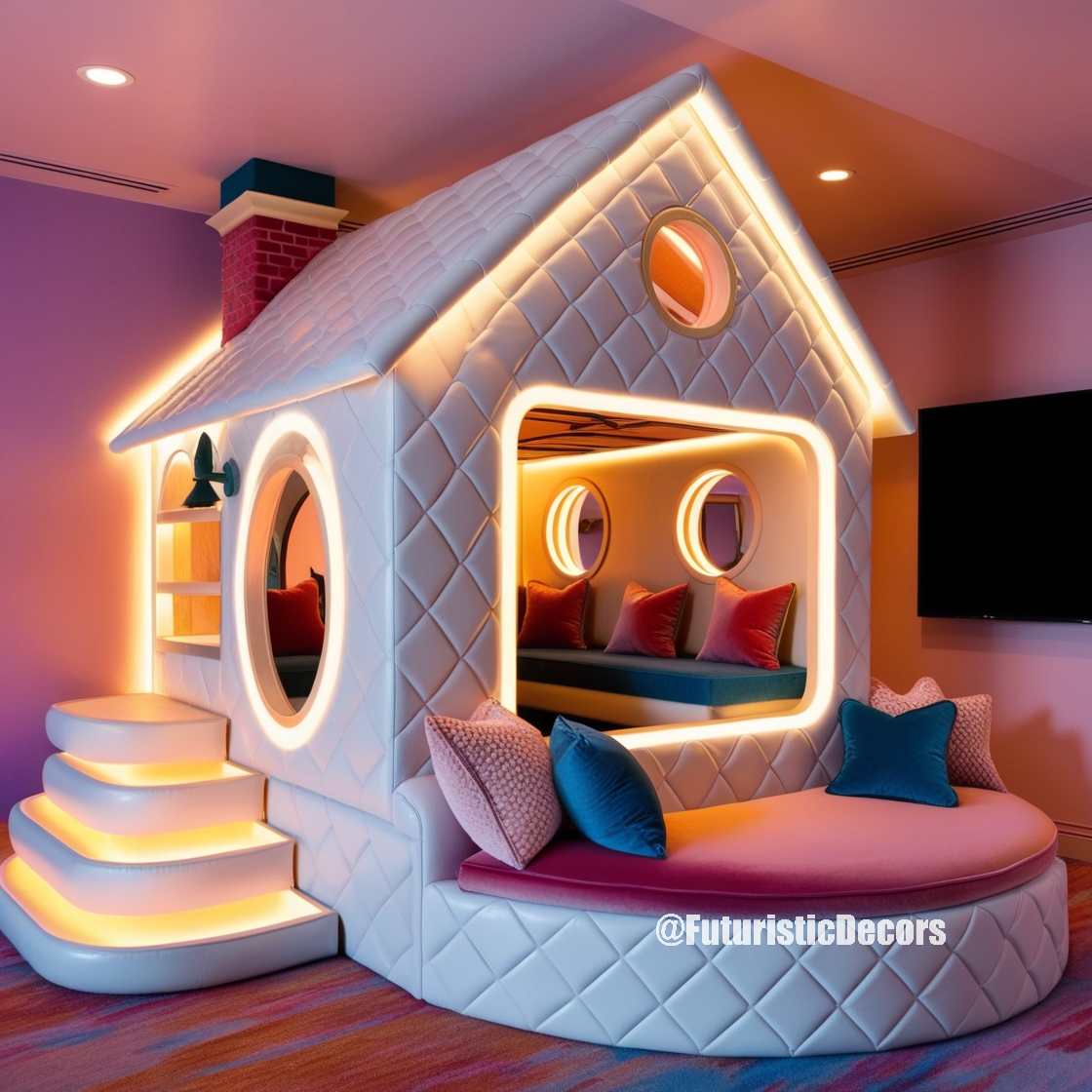
Social Media and Online Communities
Platforms like Instagram, Pinterest, and design-focused blogs have embraced House Shaped Loungers as popular subjects for home tours, design inspiration, and creative DIY projects. Online communities share ideas and showcase how these loungers can be styled in various ways, fostering a sense of community among enthusiasts.
The Future of House Shaped Loungers
Emerging Trends
As design trends continue to evolve, House Shaped Loungers are poised to adapt and innovate. Emerging trends such as multifunctional furniture, smart technology integration, and sustainable design practices are influencing the next generation of loungers. Future designs may incorporate features like built-in charging ports, adjustable configurations, or eco-friendly materials, enhancing both functionality and appeal.
Potential Innovations
Innovations in materials and manufacturing techniques open new possibilities for House Shaped Loungers. Advances in 3D printing, modular design, and sustainable production methods can lead to more customizable and environmentally friendly loungers. Additionally, incorporating smart technology could allow loungers to adjust to user preferences automatically, offering personalized comfort and convenience.
Expanding Market Reach
The market for House Shaped Loungers is likely to expand as awareness grows and demand increases for unique and artistic furniture. Collaborations between designers, artists, and manufacturers can result in limited edition and exclusive designs, further enhancing the loungers’ desirability. Additionally, international markets present opportunities for diverse design influences, enriching the overall aesthetic and functionality of future loungers.
Notable Designs and Designers of House Shaped Loungers
The unique charm of House Shaped Loungers has attracted a myriad of talented designers who have each brought their distinctive touch to this whimsical furniture piece. Understanding the contributions of these designers not only highlights the versatility of House Shaped Loungers but also provides inspiration for those looking to incorporate such pieces into their homes.
The Pioneers: Early Innovators
One of the earliest designers to experiment with house-inspired furniture was Hans Wegner, a Danish designer renowned for his contributions to modern furniture design. In the 1960s, Wegner introduced a series of loungers that incorporated architectural elements reminiscent of Scandinavian homes. His designs emphasized simplicity, functionality, and comfort, setting the foundation for future House Shaped Loungers.
Another significant figure is Florence Knoll, an American designer whose work in the mid-20th century bridged the gap between modernism and practicality. Knoll’s approach to House Shaped Loungers focused on sleek lines and minimalistic forms, making these loungers suitable for both residential and commercial spaces. Her designs often featured modular components, allowing for customization and adaptability.
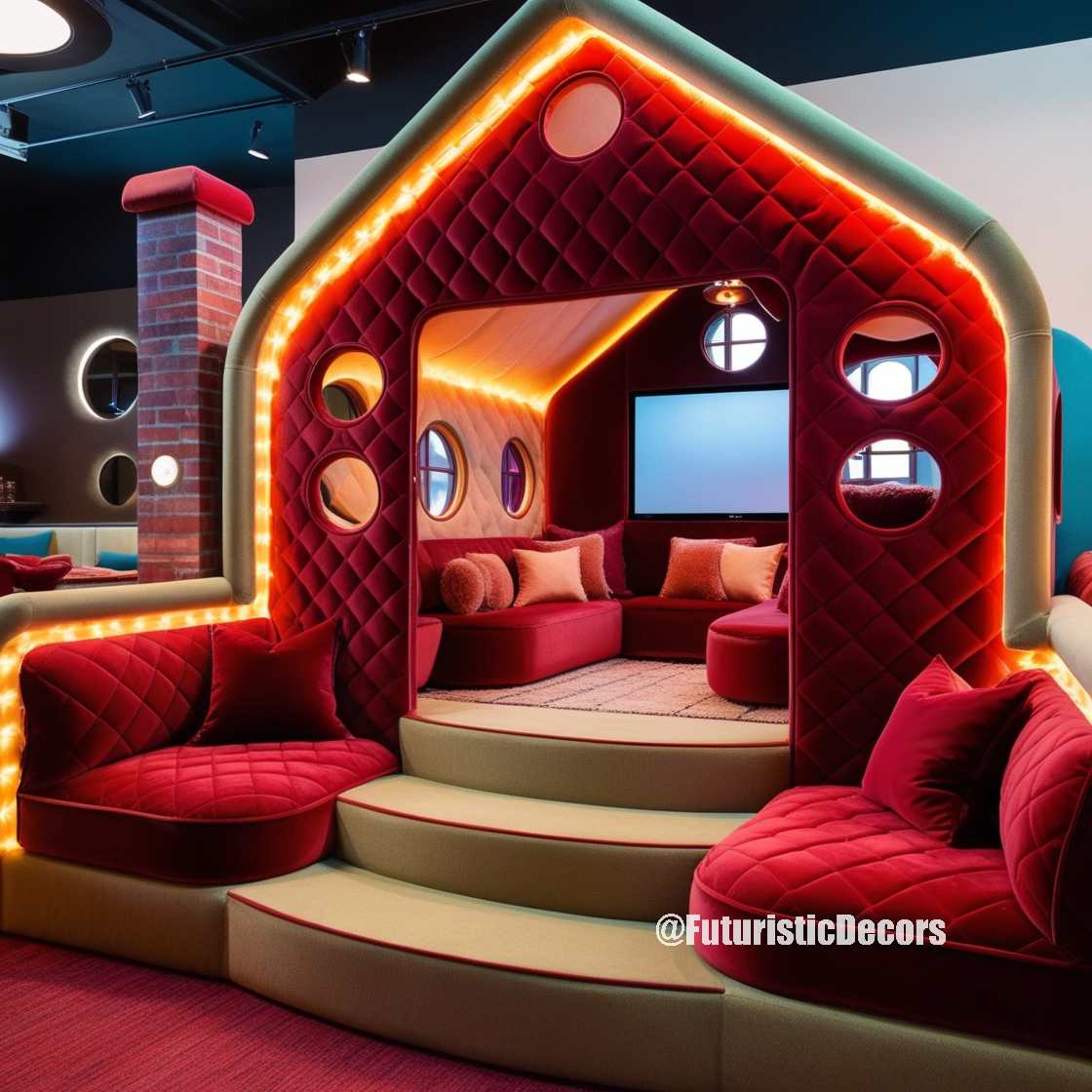
Contemporary Innovators
In recent years, designers like Kelly Wearstler and Philippe Starck have redefined House Shaped Loungers by infusing them with contemporary aesthetics and cutting-edge materials. Wearstler’s designs are known for their bold colors, luxurious fabrics, and intricate detailing, transforming House Shaped Loungers into statement pieces that command attention. Her creations often blend traditional architectural motifs with modern sensibilities, resulting in loungers that are both timeless and avant-garde.
Philippe Starck, a luminary in the world of design, has approached House Shaped Loungers with his characteristic flair for innovation and playfulness. His loungers often feature unconventional materials such as recycled plastics, transparent acrylics, and even integrated lighting elements. Starck’s designs challenge the conventional notions of furniture, making House Shaped Loungers not just comfortable seating options but also interactive art pieces.
Sustainable Design Leaders
Sustainability has become a pivotal aspect of modern furniture design, and designers like Emeco and Vitra have embraced eco-friendly practices in their House Shaped Loungers. Emeco, known for its commitment to sustainability, utilizes recycled materials and sustainable manufacturing processes to create loungers that are both environmentally responsible and aesthetically pleasing. Their designs often incorporate reclaimed wood and recycled metals, adding a rustic charm to the House Shaped Loungers.
Vitra, another prominent name in sustainable furniture design, has introduced House Shaped Loungers that prioritize durability and longevity. By using high-quality, sustainable materials and modular designs, Vitra ensures that their loungers remain functional and stylish for years to come. Their commitment to ethical manufacturing practices further enhances the appeal of their House Shaped Loungers, making them a preferred choice for eco-conscious consumers.
Boutique Designers and Artisans
In addition to mainstream designers, numerous boutique designers and skilled artisans contribute to the rich diversity of House Shaped Loungers. These smaller-scale creators often focus on handcrafted details, bespoke customization, and the incorporation of unique cultural elements. For instance, Artisan Loungers in Italy specializes in handcrafted House Shaped Loungers that feature intricate wood carvings and hand-painted finishes, blending traditional craftsmanship with modern design.
Similarly, Bohemian Bliss, a boutique design studio, offers House Shaped Loungers that reflect a bohemian aesthetic, characterized by vibrant colors, eclectic patterns, and a mix of textures. These loungers cater to individuals seeking personalized and expressive furniture pieces that resonate with their unique style and personality.
International Influences
The global appeal of House Shaped Loungers is further amplified by international influences that infuse diverse cultural elements into their designs. Designers from Japan, for example, incorporate principles of minimalism and functionality, resulting in House Shaped Loungers that are both elegant and practical. The use of natural materials and clean lines in these designs aligns with the Japanese ethos of simplicity and harmony.
In contrast, designers from India and the Middle East often introduce ornate detailing, vibrant colors, and luxurious fabrics into their House Shaped Loungers, creating pieces that are rich in cultural heritage and opulence. These international variations cater to a wide range of tastes and preferences, ensuring that House Shaped Loungers can seamlessly integrate into diverse interior design styles.
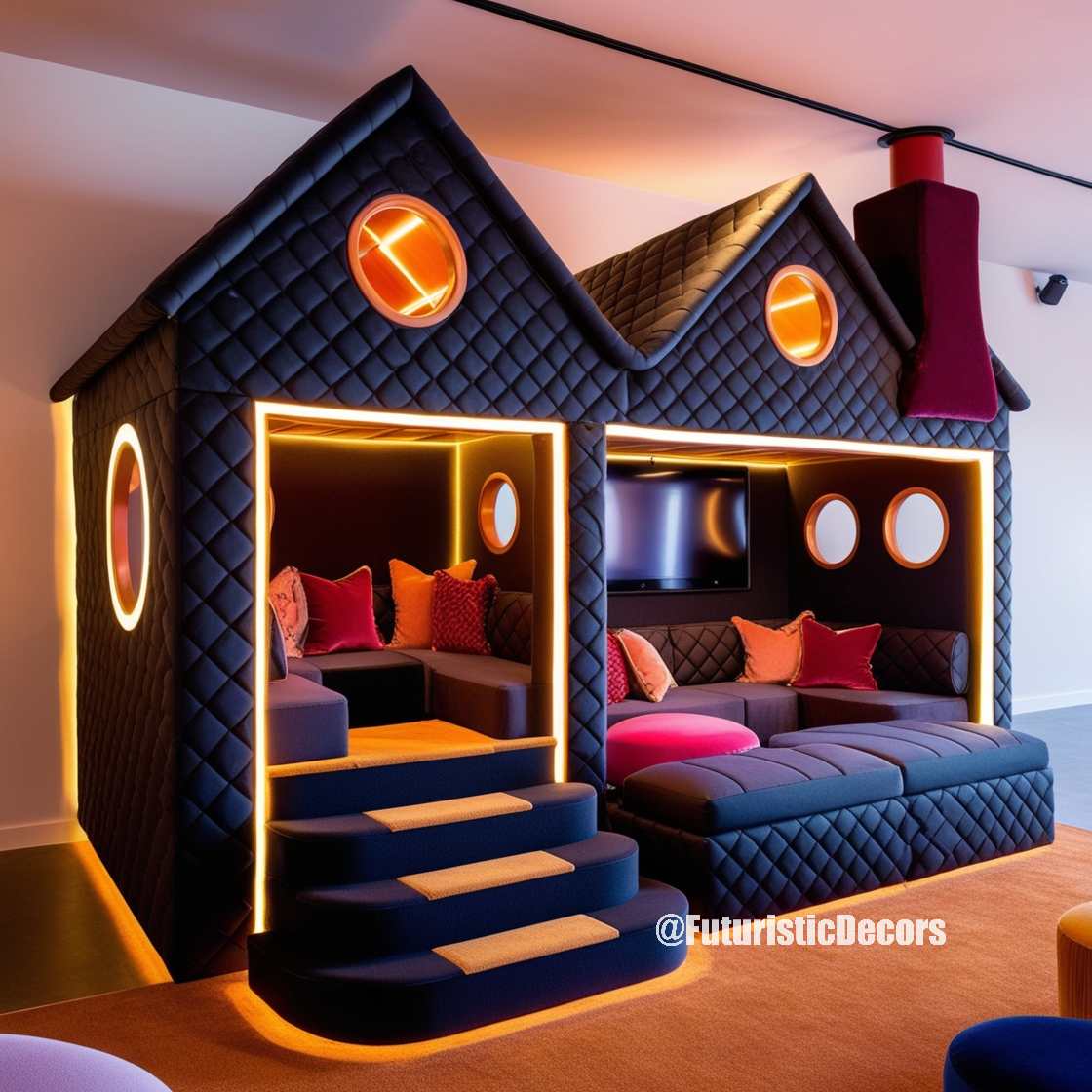
The Psychological Impact of House Shaped Loungers
Beyond their aesthetic appeal and functional benefits, House Shaped Loungers have a profound psychological impact on individuals and the ambiance of a space. Understanding these effects can help homeowners and designers harness the full potential of these whimsical pieces.
Creating a Sense of Security and Belonging
The house shape inherently symbolizes safety, stability, and belonging—qualities that are deeply rooted in human psychology. Incorporating House Shaped Loungers into a living space can evoke these feelings, creating an environment that feels secure and welcoming. This is particularly beneficial in areas meant for relaxation and social interaction, where a sense of comfort and belonging is paramount.
Stimulating Creativity and Imagination
The playful and imaginative design of House Shaped Loungers can stimulate creativity and encourage imaginative thinking. For individuals working in creative fields or environments that thrive on innovation, such loungers can serve as inspirational elements that break the monotony of conventional furniture. Their unique shape and design can spark new ideas and foster a creative mindset.
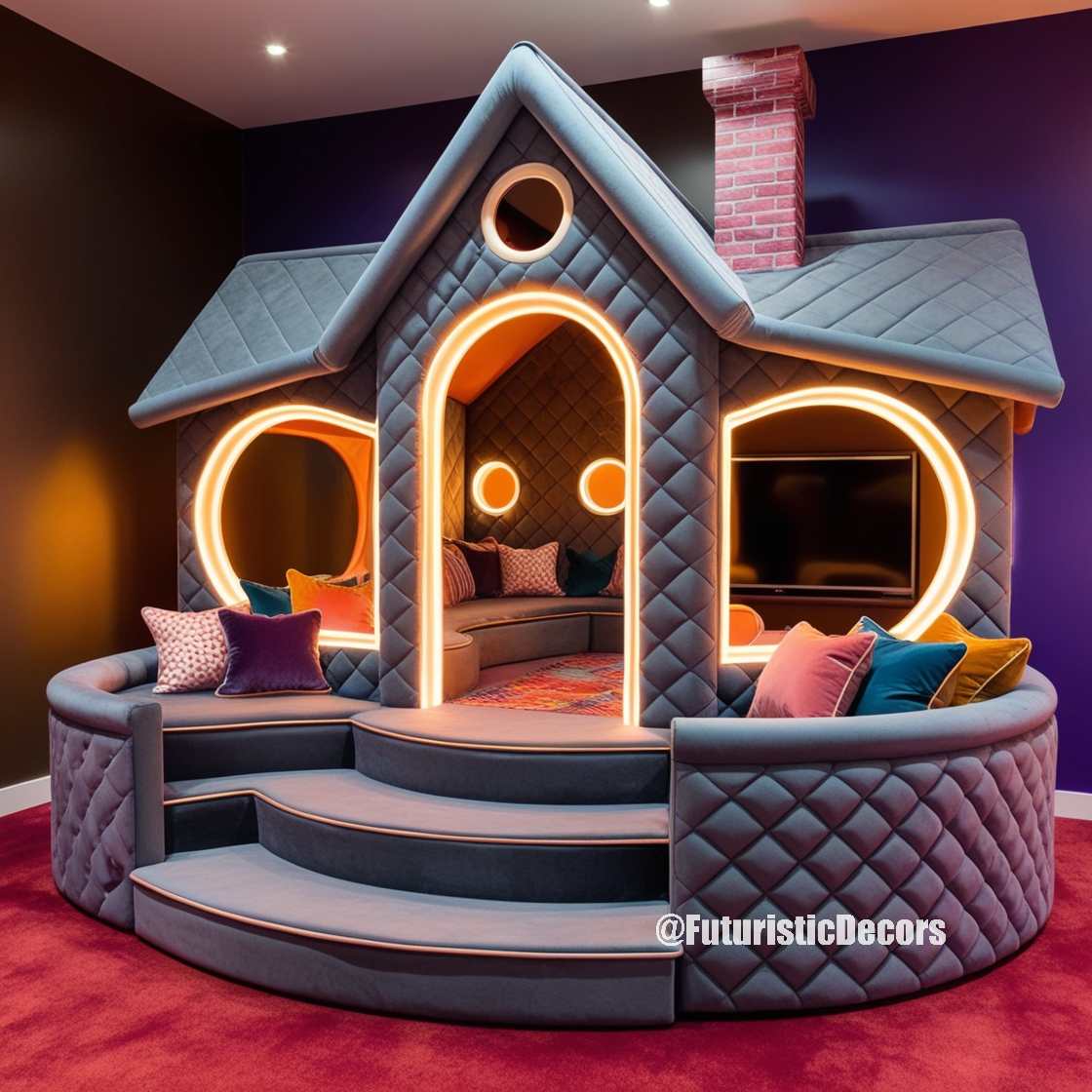
Enhancing Mood and Well-Being
Colors and shapes significantly influence mood and emotional well-being. House Shaped Loungers, with their varied color schemes and comforting shapes, can enhance the overall mood of a space. Soft, warm colors can create a soothing atmosphere, while vibrant hues can inject energy and positivity. The ergonomic comfort provided by these loungers also contributes to physical well-being, promoting relaxation and reducing stress.
Encouraging Social Interaction
In communal spaces such as living rooms and lounges, House Shaped Loungers can facilitate social interaction. Their inviting design encourages people to gather, converse, and engage in shared activities. By serving as comfortable and attractive seating options, these loungers help create a convivial and interactive environment, strengthening social bonds among family members and guests.
Personal Expression and Identity
House Shaped Loungers offer a means of personal expression, allowing individuals to showcase their unique tastes and personalities through their choice of furniture. Whether opting for a bold, colorful design or a minimalist, understated lounger, individuals can convey aspects of their identity and aesthetic preferences. This personal touch enhances the emotional connection to the space, making it feel more like home.
Refer to buy similar products: Click here
House Shaped Loungers represent a harmonious blend of whimsy and comfort, bringing a touch of architectural artistry into modern living spaces. Their unique design elements, coupled with ergonomic functionality, make them versatile additions to various settings, from cozy bedrooms to stylish living rooms and inviting outdoor patios. By evoking a sense of playfulness and nostalgia, these loungers not only provide a comfortable place to relax but also serve as captivating statement pieces that reflect the personality and creativity of their owners.
As the furniture industry continues to embrace innovation and sustainability, House Shaped Loungers are set to evolve, offering even more options for customization and functionality. Their enduring appeal lies in their ability to transform ordinary spaces into extraordinary environments, making them a cherished choice for those seeking to infuse their homes with both style and substance.
Embrace the charm and comfort of House Shaped Loungers and let them redefine your living spaces with their delightful presence. Whether you’re looking to make a bold statement or add a subtle touch of whimsy, these loungers offer a perfect blend of form and function, ensuring that your home is both beautiful and inviting.



